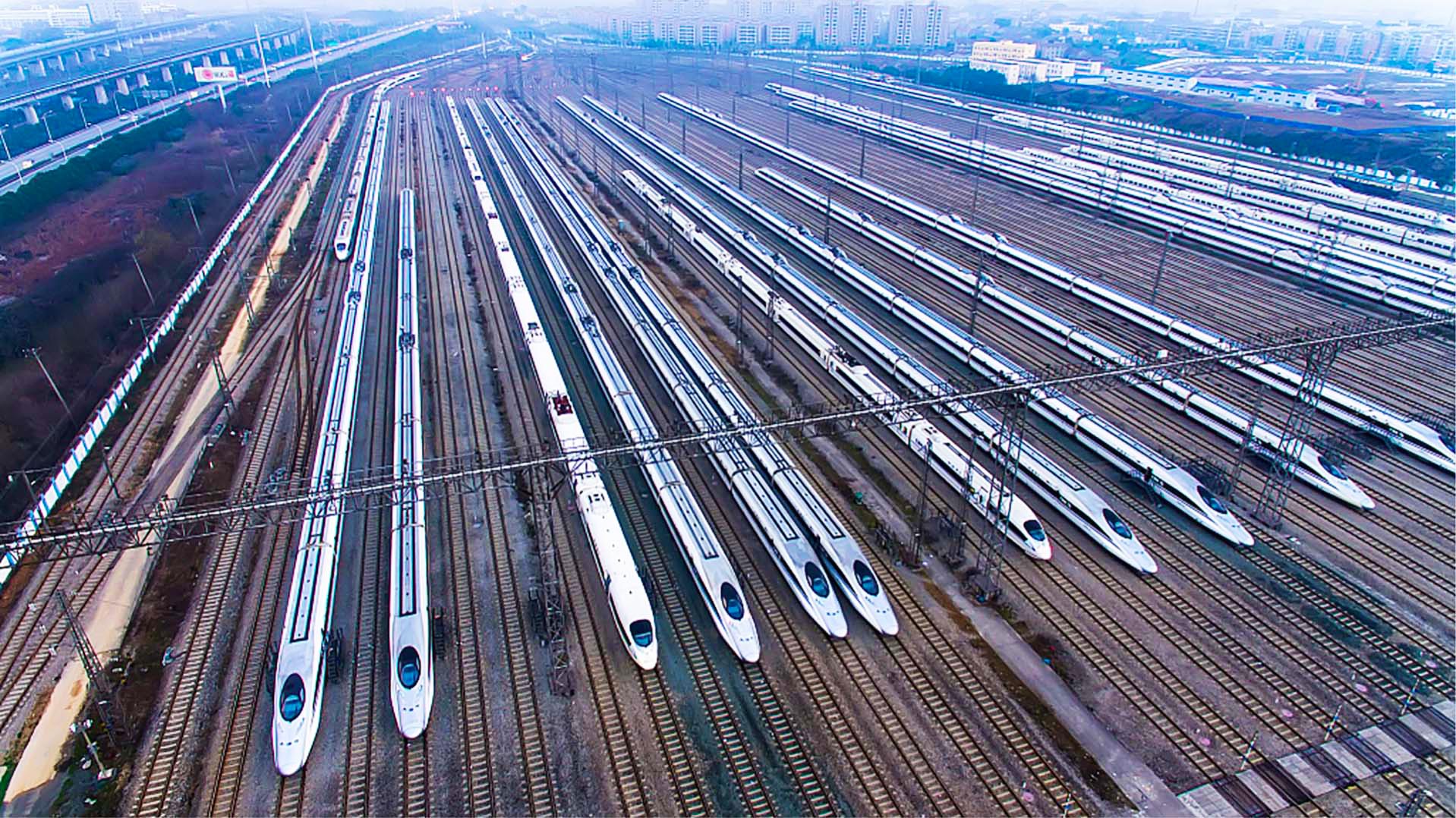
China’s Transport Revolution
With operational speeds reaching over 200mph, China’s latest bullet train marks a chapter in its high-speed rail evolution.
On June 26, 2017, the Fuxing electric multiple units (EMU) bullet train, the world’s fastest with a maximum operating speed of nearly 250mph, was publicly unveiled.
History was made that day at 11:05am sharp, when a CR400AF Model departed Beijing South Railway Station bound for Shanghai. At the same time, a CR400BF Model was setting out in the opposite direction to Beijing from Shanghai Hongqiao Railway Station.
Hitting average operational speeds of over 200mph, the trains covered the over 800-mile journey on the HSR line linking the cities in under six hours. Since then, the trip time between the nation’s two megacities has been reduced to under five hours.
Making Connections
China’s HSR construction story is impressive. It has not looked back since December 2009, when the 600-mile Wuhan-Guangzhou HSR line opened. By the end of 2020, China had laid down about 23,500 miles of HSR track, with plans to extend that system to an incredible 43,000 miles by 2035.
Central to China’s HSR vision is the desire to offer faster and more convenient inter-provincial travel for Chinese people — not to mention visitors to China — than ever before. These new railways are symbolic of the country’s economic power and desire to integrate the nation further and HSR is driving the rapid development of diverse industries and growth of China’s second-tier cities.
Domestic travel has been a boon; the Fuxing reaches all 31 provinces, autonomous regions and municipalities across the country. Travelers are taking advantage of competitive fares to explore the country, from remote destinations like the Tibet Autonomous Region to major cities such as Xi’an, Changsha, and Chengdu.

Environmentally-friendly and Efficient Design
According to the International Association of Railways (UIC), high-speed rail is eight times more energy-efficient than aeroplanes and four times more efficient than automobile use. It will also decrease greenhouse gas emissions, reduce noise pollution, and improve air quality. Furthermore, the aerodynamic design minimises operating expenses by reducing the amount of fuel consumed.
The trains deploy a sophisticated monitoring system with over 2,500 monitoring points that constantly check performance and automatically slow speeds in emergencies or abnormal conditions. The control centre can also monitor activities in real time through a remote data transmission system.
Other ingenious features include SMART smoke detectors, intelligent lighting, and state-of-the-art vibration and noise reduction facilities.

On Track for the Future
Over the coming years, Fuxing trains will be integral to the success of China’s overall HSR plan. The country continues to invest in engineering to ensure the HSR delivers on innovation and efficiency, including developing trains for all weather conditions. In January 2021, the Fuxing CR400AF-G train, designed for extremely cold climates, was unveiled. It can operate in temperatures as low as -40 degrees Celsius.
With China’s sheer size and its varied terrains, and geology, the country’s railway engineers are faced with incredible challenges to deliver on innovation.
More Stories
CLICK TO FIND OUT MORE






